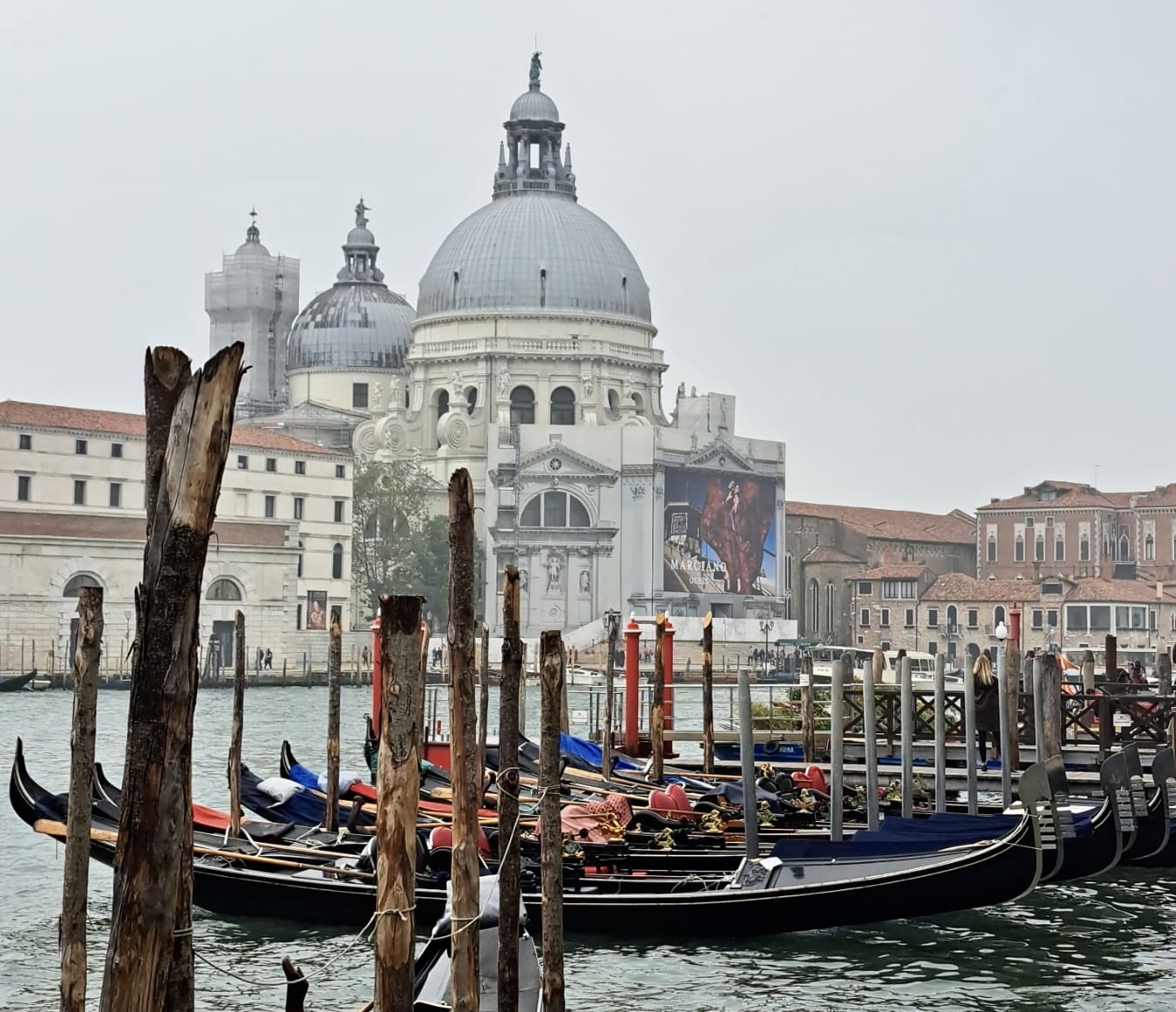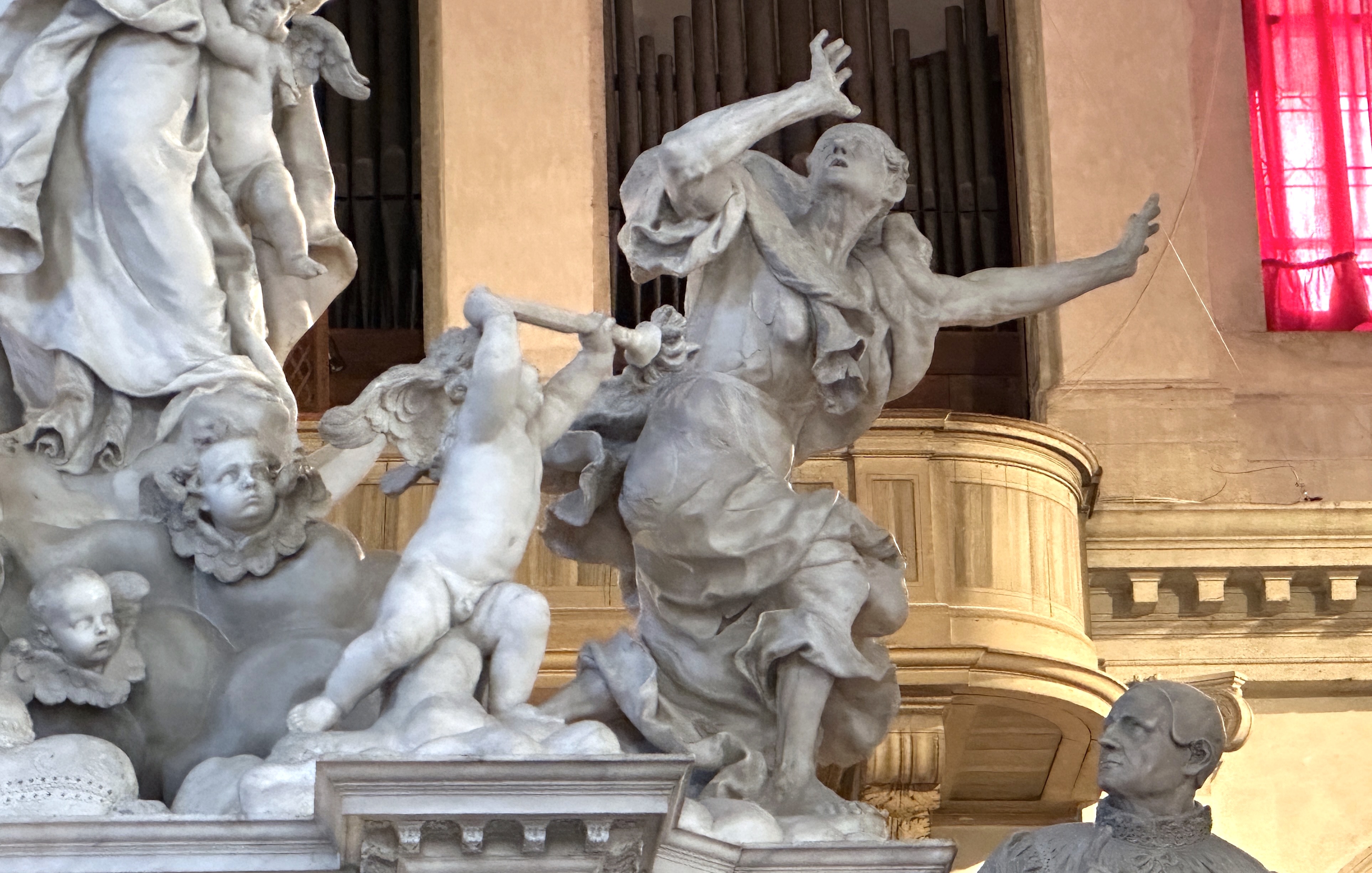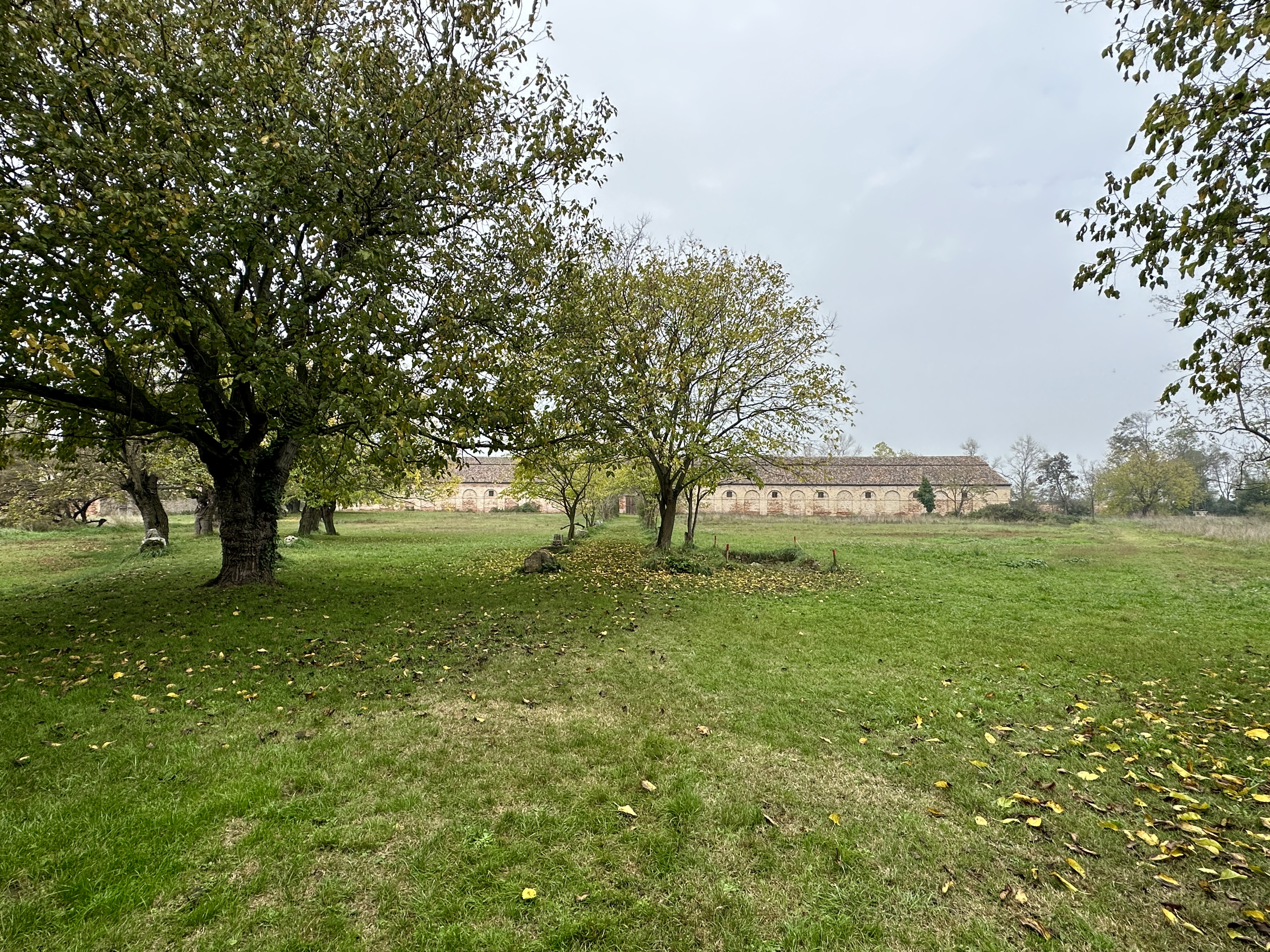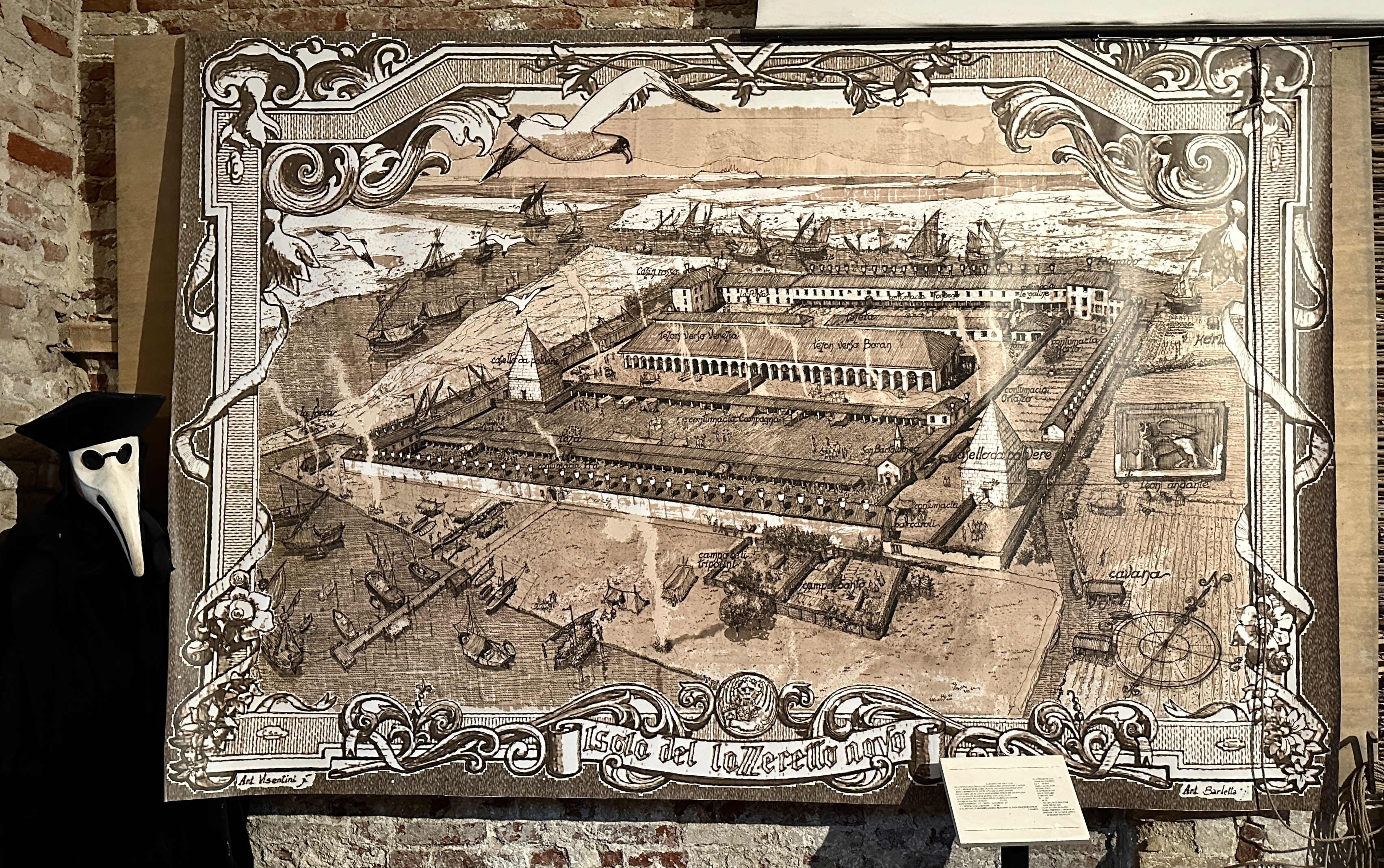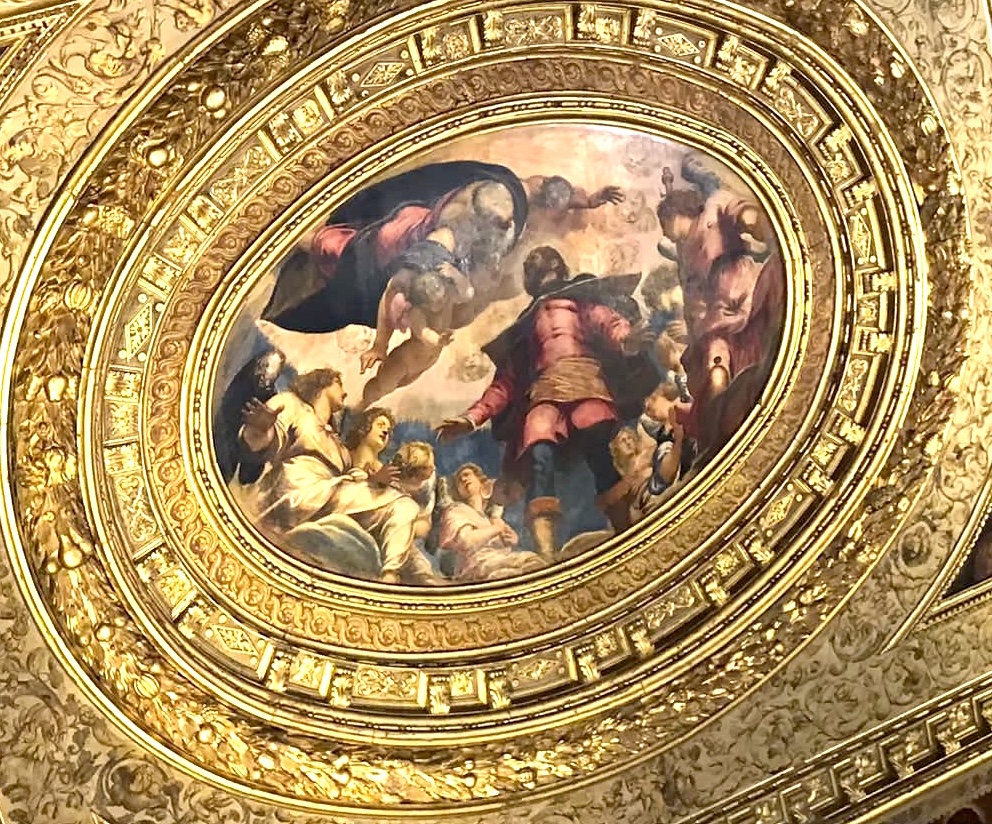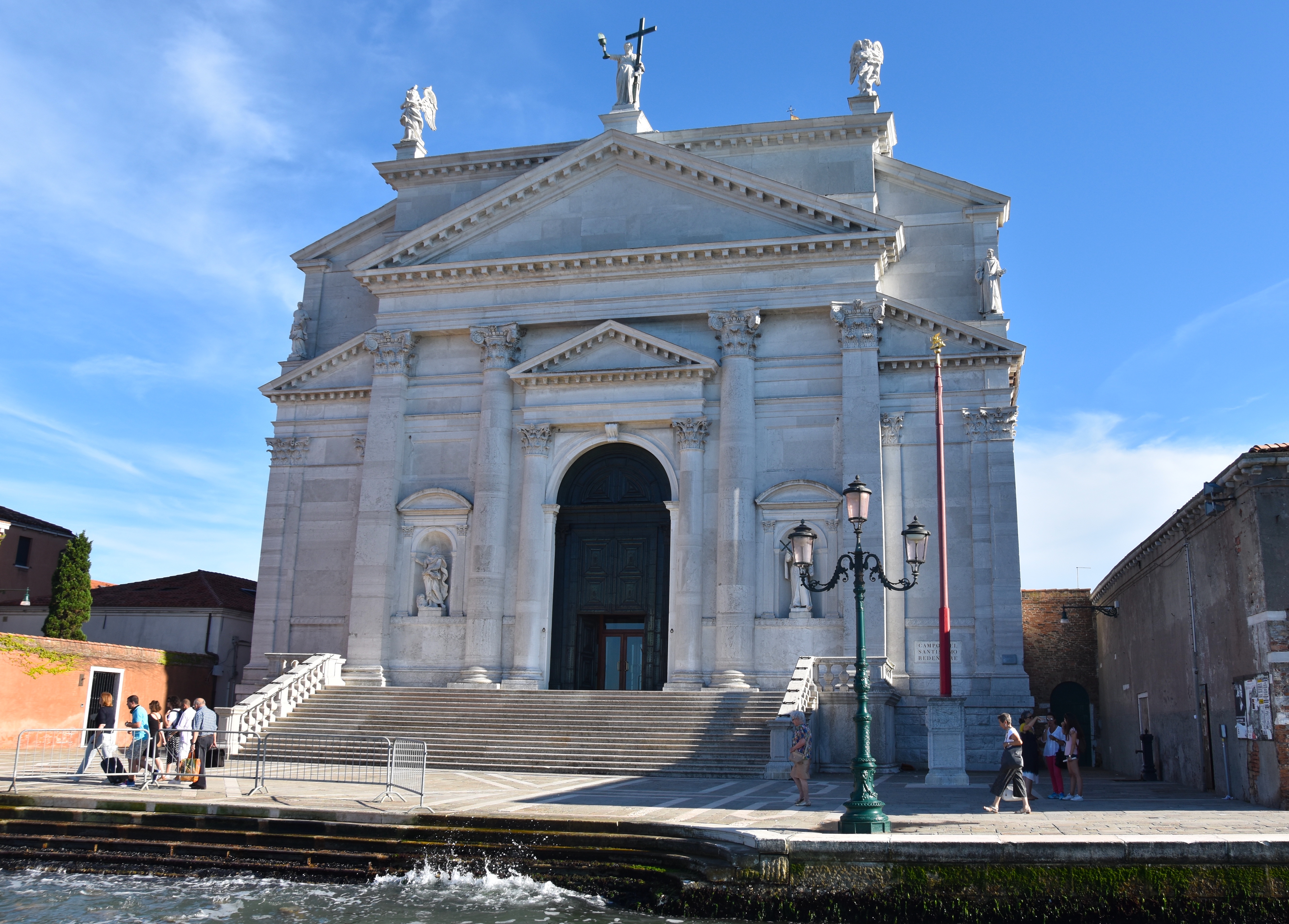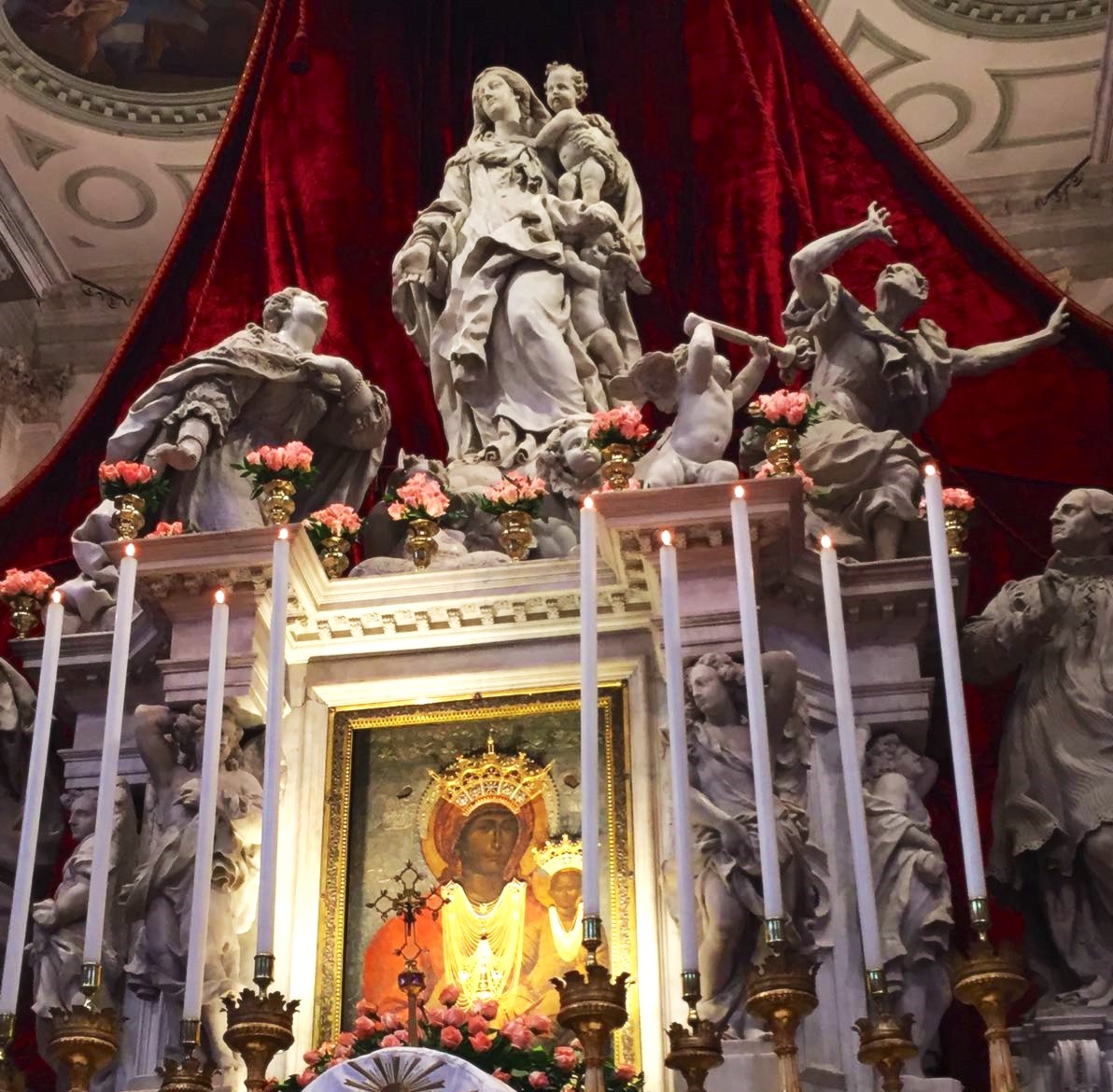History, art, religion...
Every year in Venice on
November 21st, we celebrate the
Feast of the Holy Mary of Health, but over the past few years this event has acquired even more importance for the faithful, due to the recent pandemic…
The basilica of Santa Maria della Salute (Holy Mary of Health)
A
temporary pontoon bridge is built across the Grand Canal, for the worshippers to accomplish the short pilgrimage and reach the imposing Basilica of the Holy Mary of Health (La Salute).
This church, projected by the
baroque architect Baldassarre Longhena, was started right after the
epidemic of plague which struck Venice, as well as all the other countries in Europe, in
1630-1631. During the epidemic the Venetian Republic had in fact made a vow: at the end of the tragic period, the Republic would build a temple to the Virgin Mary.
Main altarpiece in the Salute Church, by Juste Le Court (detail, the plague is pushed away)
In 1631 the black death (as the plague was called) came to an end, and that was the last epidemic that hit Venice, unlike what happened instead in the other European countries.
How come such events never happened again in our city?
Containment of Infections
Since the great epidemic of bubonic plague that affected Europe approximately between
1348 and 1350, one of the goals of the Venetian Republic was to
contain the catastrophic consequences of particularly virulent and fatal diseases: the very existence, both economical and social, of the State was under threat. The government then adopted several measures, both small and macroscopic.
First of all, it was fundamental to contain the
spreading of contagion, so that fewer people would get infected and, consequently, would have died. To reach the purpose, for example, the
Republic tried to close the borders: people coming from infected areas c
ould not enter the State. This solution, however, was always opposed, in fear that it could have
paralyzed the economics of a country that depended mainly on international commerce.
Then an
isolation hospital was created, where the sick had to be hosted.
Originally, the hospital by St. Nicholas’ church on the Lido island was chosen, but in
1423 a special
permanent coercive hospital was established on the island of the Holy Mary of Nazareth, also called Nazaretum, but this word was eventually modified in
Lazzaretto (lazaret).
It was an unprecedented hospital, which depended
directly on the State, with salaried staff, where religious orders would assist the sick for charity.
Later
other islands, such as
Lazzaretto Nuovo (the New Lazaret), were chosen to
host all those that were coming from infected places: they would have to remain in such places for about
forty days. In Italian the word for forty is
quaranta, from which the word quarantena derived: the
quarantine had been created.
The biggest building (Teson Grando) on Lazzaretto Nuovo island
Map of the Lazzaretto Nuovo in the 'Teson Grando'
A commission of
noblemen was set up to safeguard public health. It was initially a temporary committee, but it became
permanent in 1468: the first
Ministry of Health ever in history was born.
Epidemic Prevention
However, to deal with epidemics was not enough. The Republic dedicated also energy and finances to prevent contagion in Venice.
Venetians knew very well the
trade routes: they learnt to track the plague routes as well, in order to implement preventive and containment measures.
Several
representatives of the Ministry of Health would be sent to all the lands of the Venetian dominion; their duty was to monitor the spread of the epidemics, also with the help of
health spies.
Sanitary cordons were established, in order to prevent ship from entering Venetian ports without the necessary checks. All ships had to be provided with
a certificate of the ports of call, which had to be endorsed at every port, and with certificates of good health
for both the crew and the goods.In case of
uncertain provenience, or in case some members of the crew were
sick, the
whole crew, as well as all the goods, had to observe the
quarantine period.
In the city, the parish priests had to account daily for deaths to the government, and to indicate the probable cause of death for each person:
the political power relied on the capillary presence of clergy members on the territory in order to keep the situation under control, although no interference from the church would be admitted in health matters.
It would also be fundamental
to stem poverty: large numbers of poor, in fact, would have caused the contagion to spread out more easily.
The Use of Faith for Political Purposes
It was necessary
to convince the entire population not to oppose all the fore mentioned measures, so as not to affect their effectiveness. The State then resorted to
thaumaturgical saints.
St. Sebastian, for example, had been saved from the wounds caused by arrows thanks to his faith in Christ and to the care of a pious woman: he would be the perfect saint to pray to, in order to be delivered from diseases. Other important saints would be
Cosma and Damien, who had been doctors. And obviously
Christ and the Holy Mary would also be perfect for the purpose.
But faith could not be enough:
actions were needed, not only prayers. In the 1400’s the State then promoted
the cult of St. Roch: infected with plague on his way back from Rome, where he had been blessed by the Pope, to Montpellier in France, his home town, Roch decided to isolate himself in the woods, in order not to spread the contagion. Not only did he survive, thanks to a dog that daily would bring him some bead, but he also recovered! This would then be the
perfect example to follow: on the one hand, people could find
comfort in praying, and at the same time it would be easier for the government of the Venetian Republic to
enforce the law of coercive isolation in the lazarets in case of contagion.
Religion would play a great role from a political and sanitary point of view.
'The Glory of St. Roch', Tintoretto, Scuola Grande di San Rocco
As the epidemics ended, the Most Serene Republic would
consecrate votive temples to Christ and to the Virgin: this is the case, for example, of the
Redeemer’s Church and of the
Church of the Holy Mary of Health. At the same time, processions and pilgrimages to such temples would be organized every year, normally followed by great celebrations and popular festivals, to bring spirits high. Such
pilgrimages and festivals have survived up to the present day.
Redentore (Redeemer) church, Palladio, Giudecca island
If you are interested in learning more on this subject, maybe including the
visit of the Redeemer’s Church or the Church of the Holy Mary of Health, do not hesitate to contact us: it will be a pleasure to us to tell you more during one of our
guided tours in Venice!Contacts:
info@guidedtoursinvenice.comYou might be also interested in the following itineraries and posts: The Frari church and the Scuola Grande di San Rocco. (section:
Classical tours)
Venice and the plague. (section:
Specific tours)
Venice between sacred and profane: the Feast of Madonna della Salute. (section:
Blog)
Venice and the red stone that stopped the plague. (section:
Blog)
Scuola Grande di San Rocco: a saint and a painter for the glory of Venice. (section:
Blog)
Our guided and private tours of Venice. (section:
Blog)
